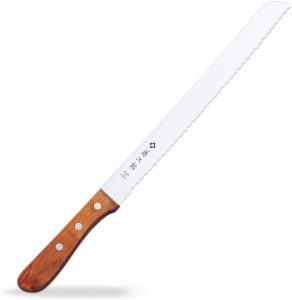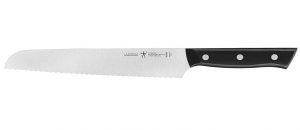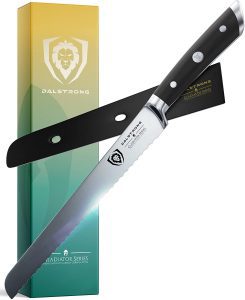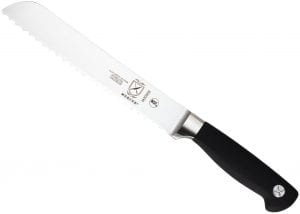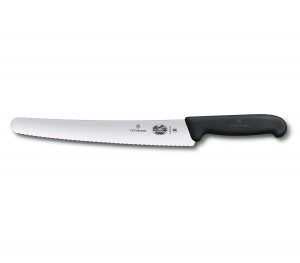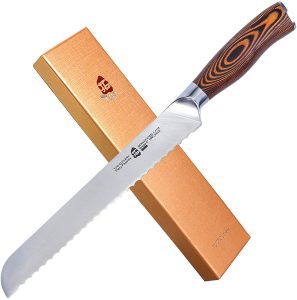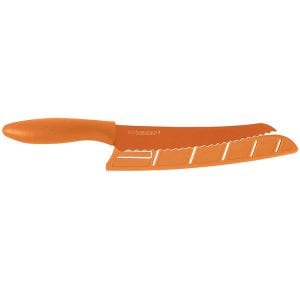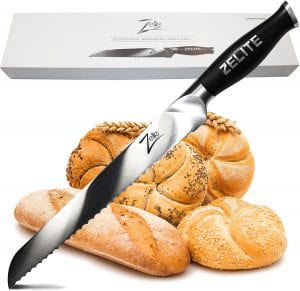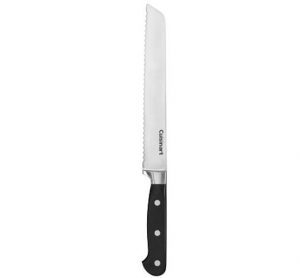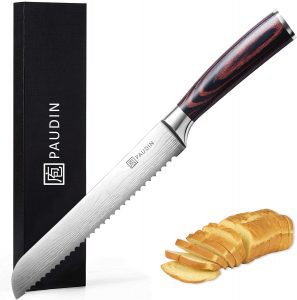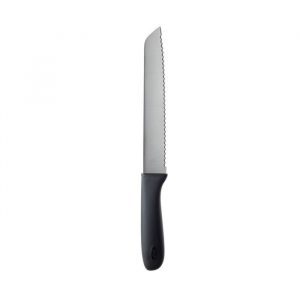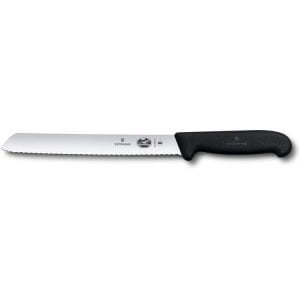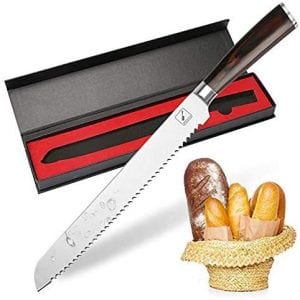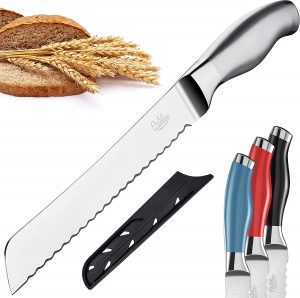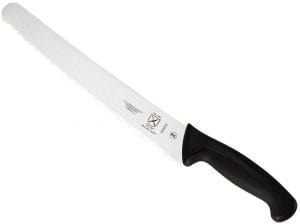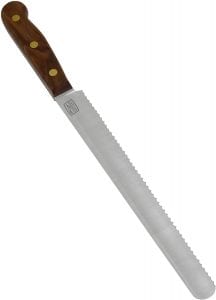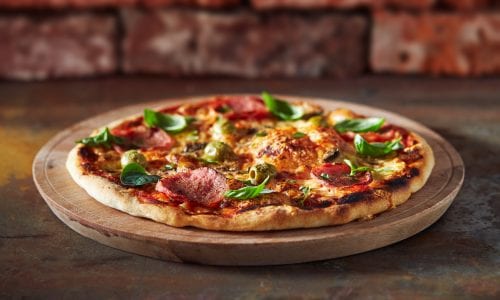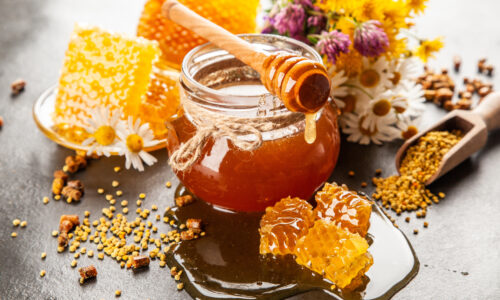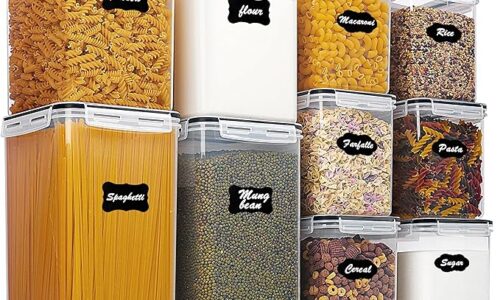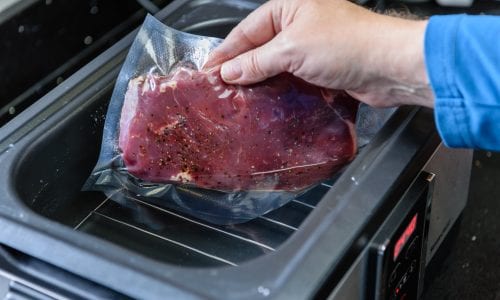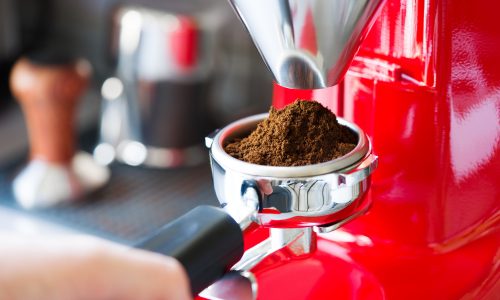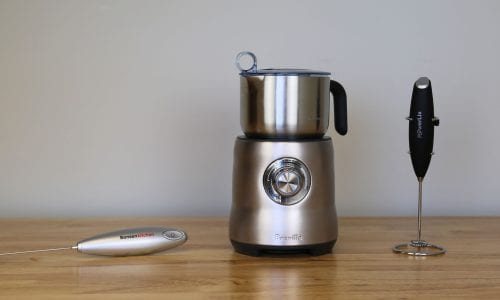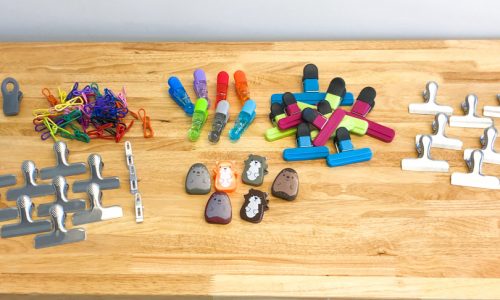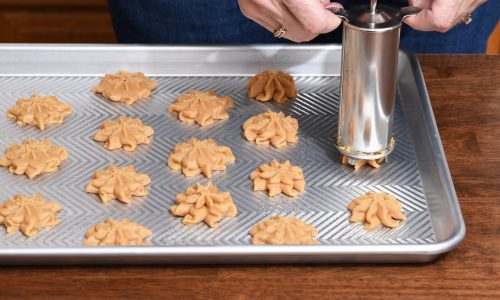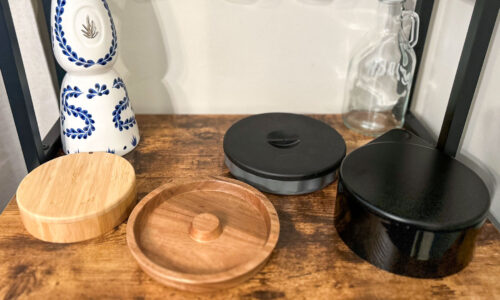The Best Bread Knife
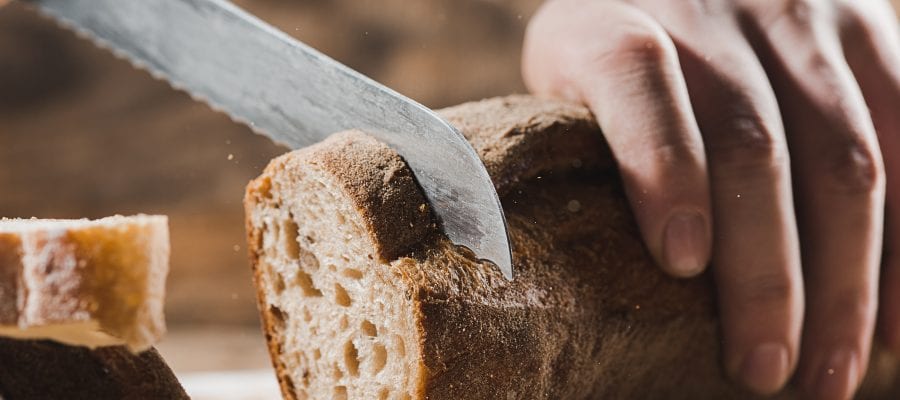
Our Review Process
Don't Waste Your Money is focused on helping you make the best purchasing decision. Our team of experts spends hundreds of hours analyzing, testing, and researching products so you don't have to. Learn more.
Our Picks For The Top Bread Knives
- 1. 藤次郎 Fujiro Stainless Steel Bread Knife, 14.75-Inch
- 2. Henckels Lightweight Fine-Edged Bread Knife, 8-Inch
- 3. DALSTRONG Gladiator Series Ultra-Hard Bread Knife, 10-Inch
- 4. Mercer Culinary Genesis Forged Bread Knife, 8-Inch
- 5. Victorinox Stainless Steel Ultra-Sharp Bread Knife, 10.25-Inch
- 6. TUO Professional Fast Cutting Bread Knife, 9-Inch
- 7. Kershaw Serrated Stainless Steel Bread Knife, 8-Inch
- 8. Zelite Infinity Comfort-Pro Safe Grip Bread Knife, 10-Inch
- 9. Cuisinart C77TR-8BD Triple Rivet Forged Bread Knife, 8-Inch
- 10. PAUDIN Pakkawood Ultra-Sharp Bread Knife, 8-Inch
- 11. OXO Good Grips Non-Slip Serrated Bread Knife, 8-Inch
- 12. Victorinox 5.2533.21 Swiss Army Lightweight Bread Knife, 8-Inch
- 13. imarku Wood Handle Gift Bread Knife, 10-Inch
- 14. Orblue Ageless Silver Effortless Bread Knife, 13-Inch
- 15. Mercer Culinary Millennia Japanese Steel Bread Knife, 10-Inch
- 16. Chicago Cutlery Tapered Edge Bread Knife, 10-Inch
Home bakers won't want to be without this bread knife. It's made with an attractive natural wood handle using a design that allows for maximum control. The high-carbon stainless steel blade is also constructed to impress, as it makes quick work of slicing through breads and other baked good.
Sharp BladeThis bread knife has a nice weight of just over 2 pounds.
This 8-inch bread knife features a durable and rust-resistant stainless steel blade. The triple-rivet handle is quite elegant and constructed with a curve for a more comfortable hold. Home chefs will find this knife works well for a variety of tasks, including slicing cake for dessert or cutting through a fresh loaf of sourdough bread.
Most EconomicalYou'll love the budget-friendly price tag on this bread knife.
The DALSTRONG Bread Knife has a highly polished edge, allowing the knife to retain it’s sharpness for a long time. It also comes with a protective sheath, and has a stylish pakkawood handle. Keep in mind that the knife may be heavy and difficult to control for some users.
Durable Option with SheathThe DALSTRONG Bread Knife is made out of high-carbon German steel.
Durability is what you'll get with this bread knife, which is forged from a high-carbon German stainless steel. It features a santoprene handle for comfort and a reliable grip. The knife's taper-ground edge stays sharp and allows for a precise cut every time.
High-Carbon German SteelIf high-quality is what you're looking for, this bread knife with its rust, corrosion and discoloration resistant properties is your best bet.
Buying Guide
Whether you love baking your own artisanal bread or enjoy a trip to the market to grab a loaf fresh from the bakery, slicing your bread with the wrong knife can ruin your treat. A dull, un-serrated knife can squish your beautiful loaf, leaving a trail of crumbs in its wake. If you want to enjoy fresh bread that has been sliced to perfection, then a bread knife is what you need.
Can you use any sharp knife to slice a loaf of bread? If you want to make sure you don’t flatten the bread while slicing, the answer is no. In order to get the perfect slice of bread, pick your bread knife carefully.
“The long, rectangular-shaped serrated blade of a good bread knife was designed to safely cut through crusty loaves of bread,” says Julie Chernoff, dining editor of Better, a lifestyle website and print magazine. “The longer blade is just right for slicing through big loaves without crushing the bread’s interior.”
The key to a good knife is the serrated edge. The jagged edge of a bread knife makes it perfect for cutting through food that has a harder exterior and a softer exterior, such as bread. Like a miniature saw, the blades of the serrated knife plunge into the hard exterior of the crust. As you push the knife back and forth, it cuts through the crust without damaging the soft interior. The gullets, which are the spaces between the teeth of the knife, reduce any friction between the knife and the food. This ensures that the knife can cut bread without any tearing or ripping.
Not all serrations are the same. Pointed serrations can easily pierce hard crusts. However, you will get more crumbs using this kind of knife. The softer, curved serrations require more pressure but are better for bread with softer exteriors.
In addition to the shape of the serrations, take into account how many there are. The more serrations there are on the knife, the smoother your cut will be. Fewer serrations may mean a more rough cut. However, you need to find a balance. The space between the teeth is what helps the knife move smoothly while cutting. As a result, you need to have a decent-sized gullet in order to more easily slice your bread.
Our Expert Consultant

Culinary Expert
Julie Chernoff is a long-time member of Les Dames d’Escoffier (past president of the Chicago Chapter, and current co-chair of the LDEI Legacy Awards Committee), the Association of Food Journalists (AFJ) and the International Association of Culinary Professionals.
Chernoff is the dining editor of Better, a lifestyle website and print magazine. Her journalism started in the test kitchens of Weight Watchers Magazine. She holds a BA in English from Yale University and is a graduate of the California Culinary Academy. She has spent the last few decades styling, photographing, teaching, developing recipes, editing, thinking and writing about food.
What to Look For
- The most important element to review when selecting your bread knife is the blade. Take into account what kind of material it’s made out of, how long it is and what the serrations look like. This will affect how well the bread knife slices your bread. The Mercer Culinary Genesis Forged Bread Knife, 8-Inch is 8 inches and is made out of one piece of high-carbon, stainless German steel. The high quality of the blade ensures that it’s easy to maintain and keep razor-sharp. A knife that has geometrically angled serrations is a great choice as it is easy to make slices with a single stroke. There is minimal crumb dispersion with a knife like this, thanks to the smooth cut. Some knives are made of high-carbon, stainless steel.
- The handle of your bread is almost as important as the blade. The handle enables you to have control of your knife, ensuring that you get the slices you want. Look for handles that provide a good grip and ensure your hand doesn’t slip. The Mercer Culinary Genesis Forged Bread Knife, 8-Inch has an ergonomic handle, which is made out of Santoprene. This ensures it is both comfortable and durable. Other knives have a handle that is made out of molded resin.
- A sheath for your bread knife ensures that your blade and your fingers are protected while the knife is not in use. Look for a set that comes with a durable sheath, which you can use when the knife is being stored. The Mercer Culinary Genesis Forged Bread Knife, 8-Inch does not include sheaths.
- For many home cooks and professional chefs alike, affordability is a determining purchasing factor. If you’re just starting out as a professional or dabbling in making your own bread, you may not want to spend too much on a bread knife. On the other hand, if you’re an experienced cook who understands the beauty of a well-carved knife, you may want to splurge on your new kitchen tool. The Mercer Culinary Genesis Forged Bread Knife, 8-Inch is a very affordable option.
More to Explore
Unlike the name suggests, a bread knife isn’t just good for slicing bread. The unique serrations make the knife useful for other purposes too. A serrated knife is best used on foods where the exterior is harder than the interior. The points of the knife pierce into the outer edge of the food while keeping the inside flesh safe from ripping and tearing.
“[Bread knives] are wonderful for slicing delicate, thin-skinned fruits that bruise easily like tomatoes and peaches,” says Chernoff. “As with crust, it slices cleanly through the skin without smooshing the fruit itself, maintaining the integrity of each slice.”
Tomatoes, peaches and nectarines can all be easily sliced using a serrated bread knife. If you try to slice a tomato thinly using a different type of knife, you will end up with a pile of smashed fruit, as the knife will not be able to pierce the skin of the tomato without force. Fruits that have a hard exterior, like pineapples and melons, are also great fodder for a bread knife. You can use the serrated edge to shave away the hard exterior without causing the soft interior to get cut.
Bread knives go beyond just fruit and vegetables. If baking is your thing, you may find yourself working with a large chunk of chocolate. This can be quite difficult to break into smaller pieces using a different kind of kitchen knife. However, the serrations of a bread knife make it easy to slice a hard block of chocolate for use in cakes, cookies and more.
Speaking of cakes, a bread knife is also a great tool for slicing uneven tops. When your cake has risen too much or unevenly, you can level it out using a serrated bread knife. It will not rip or tear your cake to crumbs as other kitchen knives might.

